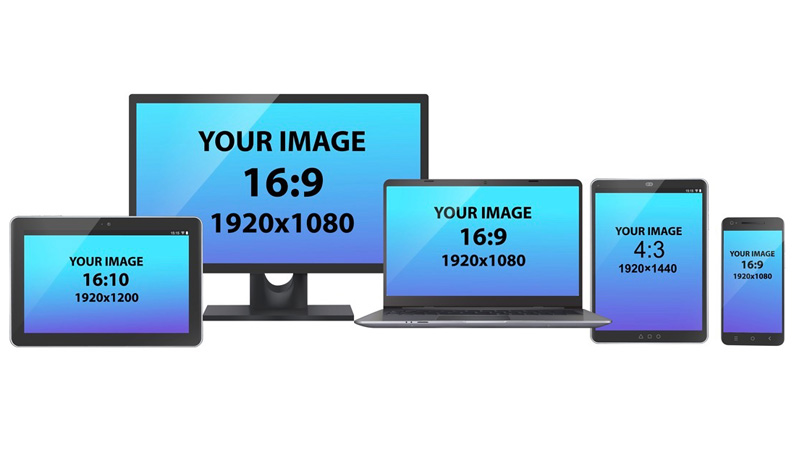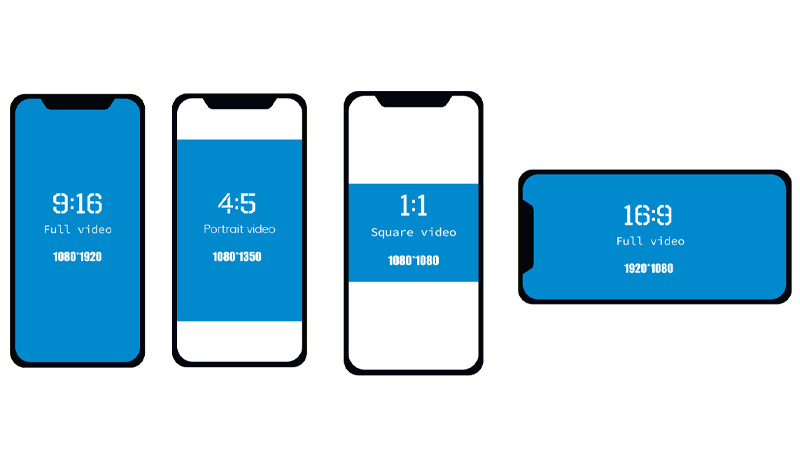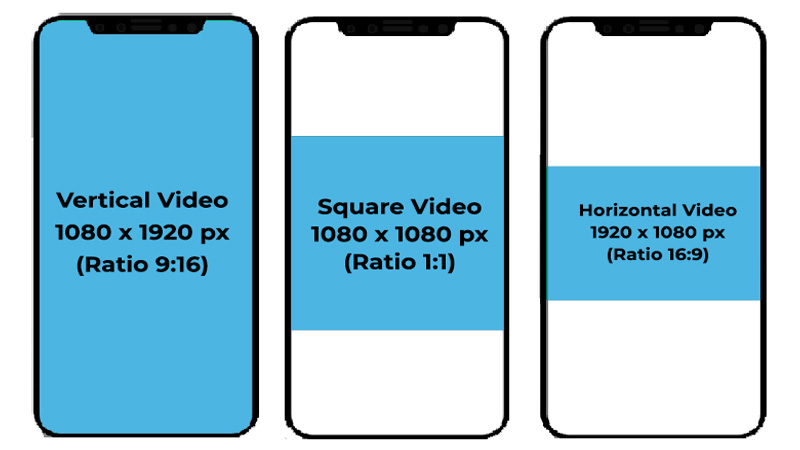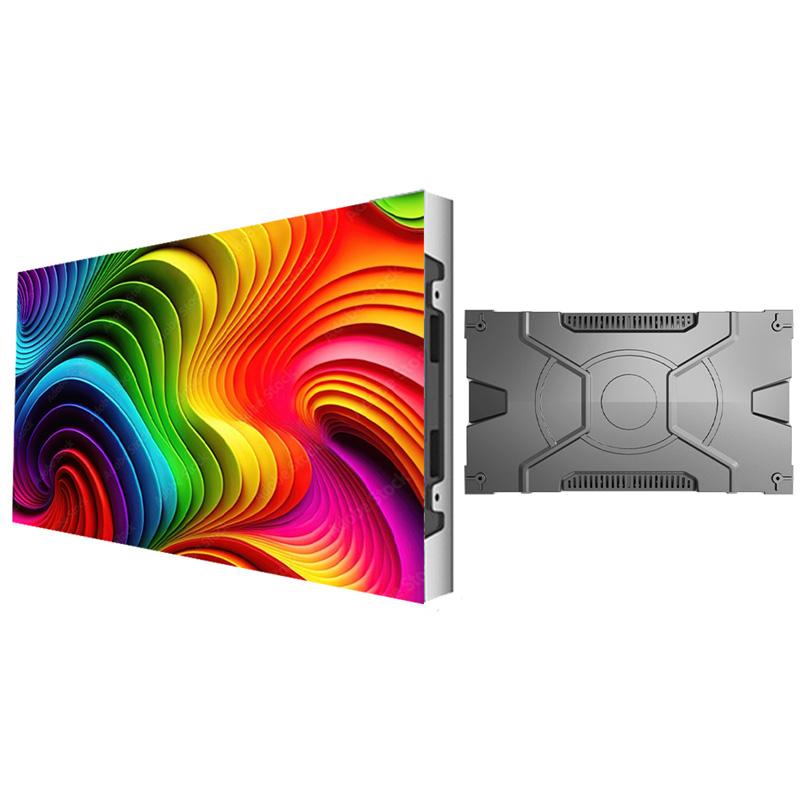
16:9 Aspect Ratio - Ultimate Guide for 2024
Have you ever used that old square-shaped monitor? If so, then you can easily compare those old screens with the new rectangular screens. Have you ever thought about what’s responsible for such a transition? It’s the shift of aspect ratio. Read ahead to learn more about this bizarre transformation.
1. What is the 16:9 Aspect Ratio?
The proportional relationship between the height and width of any 2-dimensional screen is defined by the term “aspect ratio”. It is represented by two numbers with a colon in between (height: width).
A 16:9 aspect ratio means that for any widescreen, there are 16 units of height for every nine units of width. The unit of measurement varies from device to device, and it can be pixels, inches, or millimetres.
Nowadays whether it’s your mobile screen or LEDs, they come rectangular. It’s because, since the 2000s, 16:9 has been a standard widescreen ratio and universal standard image format.
- 1). History of the 16:9 Format
If you are thinking that the 16:9 aspect ratio was introduced by any filmmaker or videographer, then it’s time to burst the bubble as it came into the picture by the efforts of a scientist.
Back in 1984, every screen had its standard ratio such as 4:3 was the standard TV ratio and 1.85:1 was the standard American cinematic ratio. Despite this variation, none of them fit all the needs ideally. So, a member of the Society of Motion Picture and Television Engineers, Dr. Kerns H. Power proposed 16:9 as a new aspect ratio.
He used mathematical calculations and found that 16:9 is a balanced compromise of all the ratios that were in use at that time. This ratio was adapted rapidly as it offers a widescreen experience and accommodates traditional TV content and cinematic experience.
Moving ahead, in 1993, the European Union spent around €228 million on its “16:9 Action Plan”. The purpose was to promote this aspect ratio in Europe, and this step taken by the European Union played a major role in the adaptation of the 16:9 aspect ratio by the industry.
Between the late 2000s and early 2010s, the computer industry also shifted from the old 4:3 ratio to the 16:9 ratio due to the increased demand for wider screens by consumers, and today, it’s a standard ratio for screens whether you talk about the gaming industry or cinematic industry.
- 2). 16:9 Aspect Ratio Complete List Calculator
As 16:9 is a proportion, not the exact dimensions, there can be different figures that can have the aspect ratio of 16:9. You can understand it as a 320 × 180 image and a 1920 × 1080 image, both have a 16:9 aspect ratio. While setting the resolution of the media, adjusting the aspect ratio might be critical.
Now, you don’t need to calculate the aspect ratios of the images manually to adjust the dimensions. You can simply do this with online aspect ratio calculators. You will find multiple aspect ratio calculators where you just need to enter the height and width, and within seconds, you will get the answer.

2. 4:3 (SD) vs 16:9 (HD) Confrontation
To get a clear picture of how 16:9 confrontation differs from 4:3, have a look at this table of contrast.
| Features | 4:3 (Standard Definition) | 16:9 (High Definition) |
| Characteristic | Standard screen ratio for old computers and TV screens. | Modern standard ratio for HD TVs, monitors, and all digital screens. |
| Ratio | For every four units of height, there are three units of width (1.33:1). | For every 16 units of height, there are six units of width (1.77:1). |
| Viewing experience | Square-shaped screens have a narrow viewing experience | Rectangular-shaped screens that offer a wider viewing experience. |
| Applications | In old monitors, CRT TVs, retro gaming, and digital screens. | HD TVs, monitor screens, streaming services, and all kinds of digital screens are available. |
| Compatibility | Needs letterboxing to adjust with modern HD formats. | Highly compatible with HD and UHD content without the need for letterboxing and cropping. |
3. Why is Widescreen 16:9 So Popular?
The core reason for the popularity of the 16:9 ratio is the widescreen experience and cinematic feel. Now every single device and digital media follows this standard aspect ratio.
- 1). Widescreen 16:9 Aspect Ratio in Action
Widescreen 16:9 aspect ratio is utilized in a variety of devices and platforms, such as:
- Televisions:
Contrary to the old televisions, which display two black bars on the top and bottom, HD televisions and Ultra-HD televisions offer a broader view due to the adaptation of the 16:9 aspect ratio, turning TVs into mini cinemas.
- Digital Content & Streaming:
Streaming platforms like Netflix, Hulu, and YouTube mostly have content in a 16:9 ratio. So, whether you’re watching a series on your PC, laptop, mobile phone, or tablet, this widescreen aspect ratio offers a cinematic experience even on smaller screens.
- Video Games:
For an enhanced gameplay experience, video games are also developed in a 16:9 aspect ratio. In this way, players have a more immersed view of the game environment.
- 2). Modern TV, Live Streaming, and Film Aspect Ratios
Even when 16:9 is a standard aspect ratio, some mediums still work with a variety of aspect ratios to provide a better user experience. There are still some broadcasts and channels that use a 4:3 aspect ratio, but as they are not that compatible, they will also be shifted to the 16:9 ratio shortly.
Where many live streaming and digital media have a 16:9 ratio by default, they also offer options that allow the users to change the aspect ratio according to their device. In the film industry, 16:9 is common, but some still follow CinemaScope (2.39:1) and IMAX (1.49:1) for a traditional theatre experience.

4. How to Get 16:9 Format Video?
There are two ways to get videos in 16:9 format. Either shoot them in the same format firsthand or convert them to a 16:9 aspect ratio.
- 1). Shoot Videos in 16:9 format.
To shoot videos in 16:9 format, you can simply select the aspect ratio before the options as most modern cameras and smartphones allow the users to choose their desired ratio. Furthermore, you can also shoot the Video or set the frame by keeping the 16:9 format in mind.
You can do so by recording horizontally and avoiding empty spaces. Modern devices also show an on-screen guide so it may also help you to record in your desired format.
- 2). How to Switch Video to 16:9 Aspect Ratio?
If the video is not recorded in a 16:9 aspect ratio, you can convert it into a 16:9 aspect ratio. You can do so by:
- Using Video Editing Software:
Several video editing software, such as Adobe Premiere Pro and Final Cut Pro, and free software, such as Shortcut, allow users to convert Video videos to their desired aspect ratio.
- Crop or Resize:
If the video is originally shot in a different aspect ratio, you can crop the bottom, top, or sides with the help of any video editing software to get the aspect ratio of your demand.
- Letterboxing or Pillar boxing:
If the aspect ratio of the video does not match your demand, you can convert it to 16:9 by adding black bars on the sides, which is called letterboxing, or on the top or bottom, which is called pillar boxing.
5. Compatibility with Other Aspect Ratios
The 16:9 aspect ratio is compatible with modern TVs, computers, and all sorts of digital media. However, if the content of this ratio is displayed on screens with different aspect ratios, such as 4:3 or 21:9, adjustments are needed to get a full-picture view. These adjustments can be made by letterboxing or pillar boxing.

6. 16:9 Aspect Ratio and LED Video Panel
LED Video Panels that are commonly used for wide displays such as in events, and stadiums are also compatible with a 16:9 aspect ratio. The core purpose of the LEDs is to offer a wider picture and 16:9 is an ideal aspect ratio in this regard. It provides a balanced media display and an enhanced viewing experience.
To fit the 16:9 aspect ratio, we have specially designed led display panels sized 600mm x 337.5mm. When stacked in the same quantity, they still maintain the 16:9 ratio. For example, stacking 5 panels in length and width gives a total size of 3m x 1.6875m. The available models are P0.93, P1.25, P1.56, and P1.87.

- Front-end Convenient Maintenance
- Cabinet Size: 600*337.5mm/16:9 Ratio
- Compatible with 300*168.75mm Module
- With 3 Years Warranty and 5% Spare Parts
7. Summing up the 16:9 Aspect Ratio
So far now, the 16:9 aspect ratio is working great for all digital screens and digital media. But with time, consumer’s demands and expectations rise and they want a better experience.
To meet the demands and expectations, the industry is already looking for a better aspect ratio that satisfies the clients in a better way. So, who knows how long the standard 16:9 aspect ratio remains a standard?